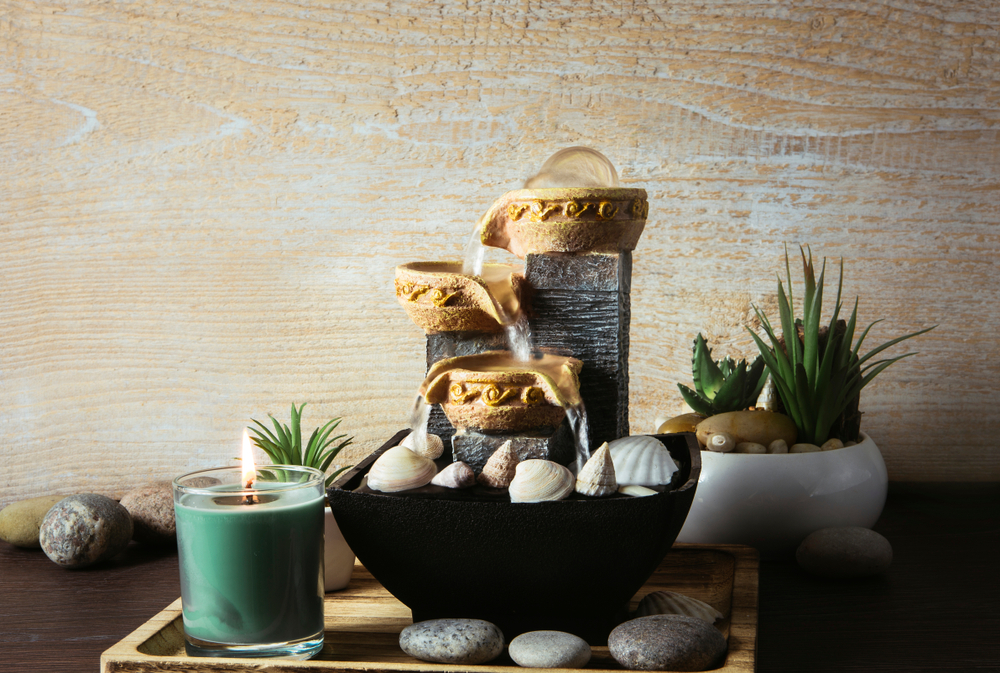A Quick Guide to the Water Element in Feng Shui

Water is critical to life on Earth. It covers over 70% of our planet’s surface and makes up about 60% of the human body. So it’s no surprise that it played important roles in human cultures. Most connected it with its cleansing and life-giving properties, but the ancient Chinese took things a step further. Water is a key part of feng shui, the art of arranging interior spaces to harmonize with the natural world. This quick guide explains water’s place in feng shui and how it’s used to promote positive energy flow.
Feng Shui and the Five Phases
Feng shui incorporates the idea of wuxing. You’ll see it in a lot of traditional Chinese thought, including Taoist principles. The Internet Encyclopedia of Philosophy says that wuxing translates as “five processes” or “five phases.” Wuxing encompasses cycles of motion or change, instead of static material substances as in ancient Greek thought.
Wuxing’s five elemental phases occur in both creative and destructive cycles. In classical Chinese philosophy, the creative cycle begins with wood fueling fire. Fire produces earth by generating ash. Earth produces metal through geological processes, and metal allows water to condense in vapor form. The cycle begins again when water hydrates wood. The destructive cycle starts with fire melting metal. Metal cuts wood, which in turn breaks up earth by growing through it. Earth can soak up water, which restarts the cycle by quenching fire.
Feng shui uses a map called a bagua to guide the arrangement of interior spaces. The Spruce explains that the bagua divides a space into nine distinct areas, each aligned with one of the five elemental phases. Every area represents an aspect of a person’s life. Creating good energy in those areas requires balance – and that means bringing the right elements into each one.
Water, Wisdom, and Work
Classical Chinese philosophy associates water with the color black and the winter season. You’ll also see it represented with wavy or curvy shapes. Water occupies the Kan area of the bagua – typically the northernmost segment of the map. In most feng shui traditions, this area represents one’s career or life path.
Architect Anjie Cho describes the water phase as flowing and shifting, with connections to wisdom and intuition. Given that it’s in the career area of the bagua, these connotations aren’t surprising. Cho adds that adding more of this element may be helpful if we want to improve social connections and wealth. This also makes sense – social connections may lead to better career prospects, which can help generate more wealth.
Boosting the Water Element in Your Home
Feng shui schools use different approaches to find north. Some use the literal compass direction, while others set the front door as the northern point. Either way, practitioners suggest incorporating the water element in the northern area. Doing so can encourage positive energy flow.
Fortunately, there are tons of ways you can do this. Fountains and aquariums are the most obvious solutions – you’re placing literal water in those spaces. But if these aren’t workable, you can use other things to symbolize the water element. Black, charcoal gray, and navy blue décor objects can work – think vases, art, throw pillows, rugs, or other accessories. Mirrors are another great option thanks to their reflective properties. You could also try artwork with watery imagery. Don’t forget that you can use shapes to bring water into your space. Try objects with wavy, curved, or irregular-shaped patterns and edges.
Water, Water Everywhere
Several cultures believe that there’s a cosmic energy that flows through everything. Feng shui aims to encourage energy flow for better harmony and positive outcomes. As one of five elemental phases, water possesses both creative and destructive energies. With a few simple additions, you can easily introduce and balance this element inside your home.

